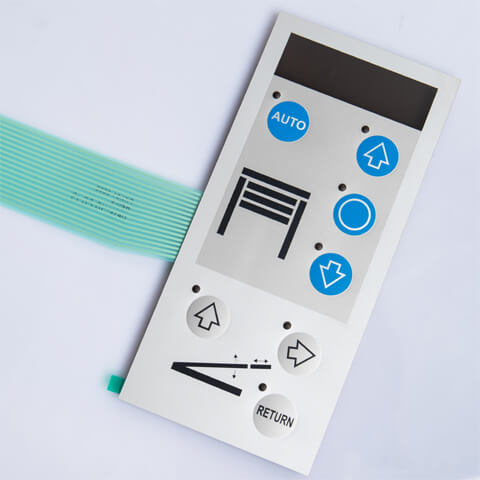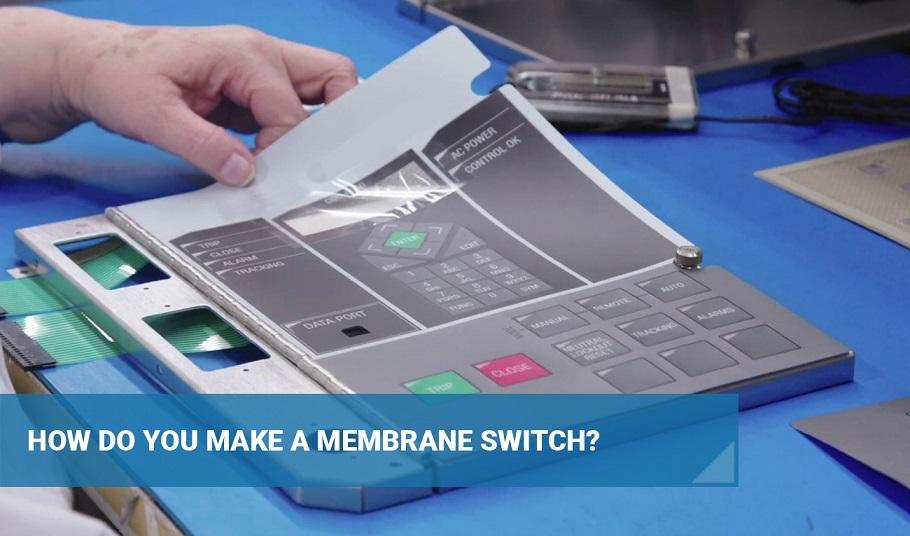Comprehending the Functionality of Membrane Layer Switches for Individual User Interface Devices
The performance of membrane layer changes represents a significant development in individual interface layout, integrating performance with visual adaptability. As industries significantly prioritize individual experience, recognizing the subtleties of membrane layer button modern technology becomes necessary.
What Are Membrane Layer Buttons?
Membrane layer switches are ingenious interface gadgets that promote customer interaction with electronic tools. These flexible components are composed of several layers, consisting of a graphic overlay, spacer, and a printed circuit layer. The layout allows for a smooth integration into numerous electronic tools, enhancing both the visual and functional elements of individual interfaces.
Membrane layer buttons are typically utilized in a wide variety of applications, from house devices to commercial equipment and clinical tools. Their building and construction typically includes a slim profile, making them a perfect choice for small layouts. The responsive feedback offered by these switches can be engineered to fulfill specific customer choices, making sure reliable communication between the customer and the tool.
Longevity is an additional substantial benefit of membrane buttons, as they are immune to dust, moisture, and chemicals, which boosts their life-span popular settings. Furthermore, these switches can be personalized in terms of form, size, and visuals design, permitting branding and user-specific functions. Overall, membrane changes stand for a useful service for boosting individual experience in electronic gadgets, integrating capability with aesthetic allure in an effective manner.
Exactly How Membrane Changes Work
Operating on an uncomplicated principle, membrane layer switches use a layered building and construction to sign up individual input effectively. Each switch includes several layers, consisting of a printed circuit layer, a spacer layer, and a top visuals layer, which are developed to interact perfectly. When a customer presses the top layer, it presses the spacer layer, bringing the conductive components of the circuit layer into call with each various other.
This contact produces a shut circuit, signaling the device to execute a certain function. The design permits for various setups, including responsive feedback, which can improve the individual experience by supplying a physical feeling upon activation. The products made use of in membrane switches usually include flexible substrates, such as polyester or polycarbonate, which make certain resilience and durability versus damage.

Secret Advantages of Membrane Switches

Another significant advantage is their density. Membrane buttons are thin and lightweight, which allows producers to save room in their devices without giving up capability. This function is especially helpful in applications where weight and volume are important factors to consider.
Furthermore, membrane buttons are immune to dust, dampness, and chemicals, improving their sturdiness. This resilience prolongs their life-span and decreases the demand for regular substitutes, leading to cost savings with time.
Furthermore, the responsive feedback supplied by membrane switches can be optimized to improve customer interaction. They can consist of attributes such as raised switches or distinct clicks, enhancing use and individual experience.
Applications Throughout Industries
Customer interface gadgets making use of membrane buttons are prevalent in a broad array of industries, showcasing their versatility and capability. Membrane Switch. In the medical industry, membrane layer switches are indispensable to devices such as diagnostic devices and individual surveillance systems, where their toughness and convenience of cleansing are essential for keeping health standards. Similarly, in the vehicle market, these buttons are used in control panel controls and infotainment systems, providing a sleek and modern interface for users.
Moreover, the consumer electronics sector take advantage of membrane buttons in devices you could try these out and portable tools, where compact style and straightforward user interfaces boost customer experience. Industrial applications also leverage membrane changes for control board in equipment and automation systems, stressing their toughness and resistance to extreme atmospheres.
In the aerospace and protection markets, membrane switches are utilized in cabin controls and devices, where dependability and performance under severe problems are paramount. In addition, the video gaming market progressively incorporates membrane layer switches in controllers and arcade equipments, contributing to an interesting customer experience. On the whole, the versatility of membrane layer changes allows their prevalent usage across countless markets, highlighting their significance in modern-day interface style.
Future Trends in Membrane Layer Switch Technology

Furthermore, the usage of advanced materials, such as polycarbonate and polyester movies, is anticipated to rise, offering improved sturdiness and resistance to environmental stress factors. These products contribute to the overall durability of membrane layer buttons, making them ideal for harsher industrial applications.
Additionally, the incorporation of wise modern technology, including IoT connectivity, will make it possible for membrane buttons to communicate with various other devices and systems, promoting an extra interactive Web Site customer experience. This fad aligns with the growing need for clever devices throughout various markets, from medical care to customer electronic devices.
Last but not least, personalization alternatives are anticipated to expand, allowing makers to develop bespoke solutions tailored to specific customer demands and choices. These growths will position membrane layer buttons as important components in the evolution of user interface technology.
Conclusion
In conclusion, membrane layer changes stand for a critical advancement in customer interface technology, using a dependable and flexible solution for varied digital applications. As innovations in product science and touch noticing innovations proceed, the functionality and applicability of membrane buttons are expected to broaden, enhancing their relevance in modern electronic gadgets.